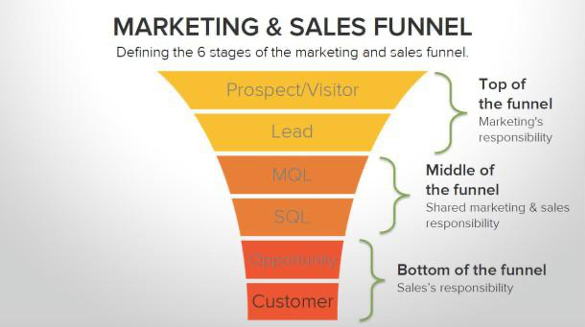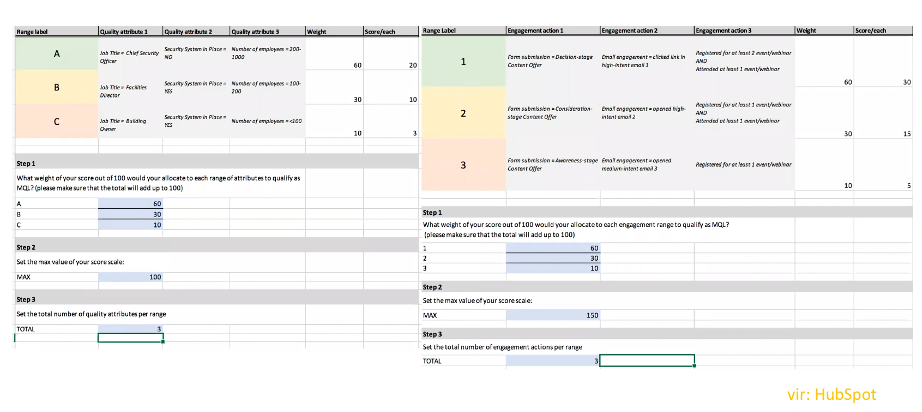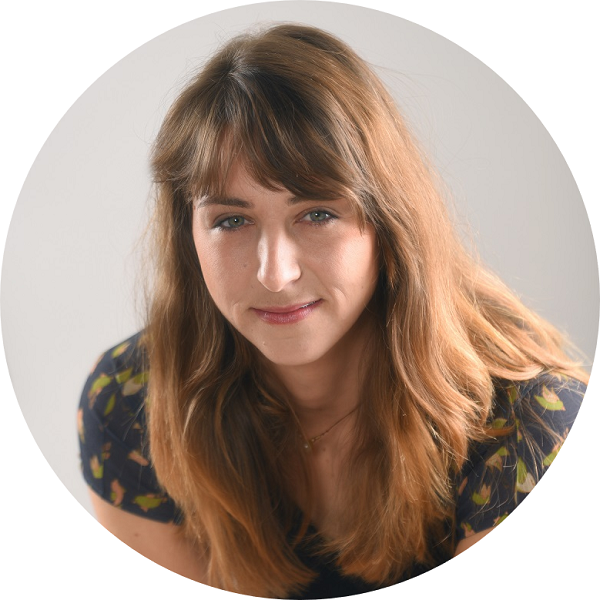Zapis je na voljo tudi v slovenščini
As in other areas of life, success in business depends on knowing how to seize the right moment: you must be able to recognise when a prospect is ready to talk to your sales team.
The fact that somebody downloaded your content offer does not mean that they are ready to buy your product. If you jump the gun and start selling too soon, you risk turning potential customers off. On the other hand, a well-timed contact from a sales rep can be crucial to closing a deal.
So, how do you find the right moment? When do MQLs (Marketing Qualified Leads) turn into SQLs (Sales Qualified Leads)?
Back in December we hosted a webinar where our founder & MD Jasna Suhadolc set out to answer this question. You are welcome to watch the webinar recording, but since it was held in Slovenian, we prepared a short summary for those of you who don’t speak the language.
The importance of sales and marketing alignment
Lately we’ve talked a lot about the importance of sales and marketing alignment, partly because we all too often come across companies where these two departments work past each other: they don’t have the same goals, they don’t agree on how MQLs and SQLs are determined and they haven’t collaborated in creating buyer personas (ideal customers).

The Marketing & Sales Funnel shows the journey your customers go through before making a purchase, as well as the point of contact between the two departments.
At the top of the funnel are people who come to your website, and it is marketing's job to convert them into leads.
The next step is to convert leads into MQLs and SQLs, which is a shared marketing and sales responsibility.
The bottom of the funnel – converting SQLs into opportunities and opportunities into customers – is a domain of the sales department.
At each stage of the funnel, a certain number of visitors will drop off, but it should be the goal of both departments to maximise conversions (the share of visitors that move to the next stage).
One of the ways to strengthen cooperation between marketing and sales are the so-called ‘smarketing’ meetings, where the two departments are to agree on goals and definitions and exchange information and content. If your salespeople know the content that your prospects are reading and looking at, they will find it much easier to start the conversation once your marketing team hands them the leads.
How to define your MQLs and SQLs
MQLs are contacts that are more likely to become customers compared to other leads in your database. SQLs are contacts who have certain attributes or have indicated by certain actions that they are ready to talk to the sales team.
It’s up to each company to determine which attributes are more or less important for an MQL to become SQL, but it’s crucial that sales and marketing agree on them. Here are some questions to consider in the process:
- Company size: Is the company big enough?
- Job function: Is the person a decision-maker in the company? Does he/she work in marketing or sales?
- Company name (if you’re doing account-based marketing)
- Industry (if your business is specialised in an industry)
- B2B or B2C? (Some businesses are involved only in B2B markets)
- Geographical location (For location-based businesses)
To move a lead from an MQL to SQL, it should also meet the BANT criteria:
- Budget (Does the person have the ability to spend?)
- Authority (Is the person a decision-maker?)
- Need (Does the person have a need that your company can address?)
- Timing (In what timeframe will the person need our solution?)
What is lead scoring?
Lead scoring is the process in which each lead you generate is assigned numerical values (or ‘points’) that reflect the actual compatibility they have with your product. It is a way to prioritise leads and respond to them appropriately, making sure that the salespeople aren’t wasting time on prospects that are not yet ready to become customers.
You can score your leads based on various attributes, including demographic information, company information, online behaviour, email and social engagement, etc.
Jasna showed us an example of a lead scoring matrix from HubSpot that helps you sort the attributes that you consider most relevant by order of importance. She emphasized that at this stage all leads are already sales qualified, you are now finding out which leads salespeople should focus on first.
When a lead reaches a certain score, HubSpot and similar CRM tools automatically trigger an action, such as notifying a salesperson.
A salesperson must decide whether to follow up on the lead, or hand it back to marketing (change it back to MQL). There can be several reasons for this to happen: the lead is not a decision-maker, the timing isn’t quite right, the priorities of the company have shifted, … You certainly don’t want to follow up too soon, as the lead might perceive you as ‘too aggressive’ and pull out.
Lead nurturing with marketing automation
If you want to connect with your prospects and turn them into customers, you must first define the stages of the buyer's journey and the types of content you need to offer in each stage.
Marketing automation tools help you guide your prospects throughout the buyer's journey by educating them, advising them, helping them and, when the time is right, encouraging them to become clients.
For example, you can create a content download workflow based on a form submission: when someone downloads your e-book or subscribes to your newsletter, they will automatically receive an e-mail with relevant content.
HubSpot provides predesigned templates to categorise contacts based on the lifecycle stage they are in. All you have to do is determine the triggers; the criteria, by which a contact becomes a lead, MQL/SQL, opportunity or customer.
The hardest part comes first – you have to decide what makes a lead marketing and sales qualified.
We’ve helped many of our clients do that by conducting lead qualifying and lead scoring workshops together with their marketing and sales departments, and then, implementing it in Hubspot.
If you have more questions or need help with HubSpot, you can schedule a 30-minute call with Jasna.





